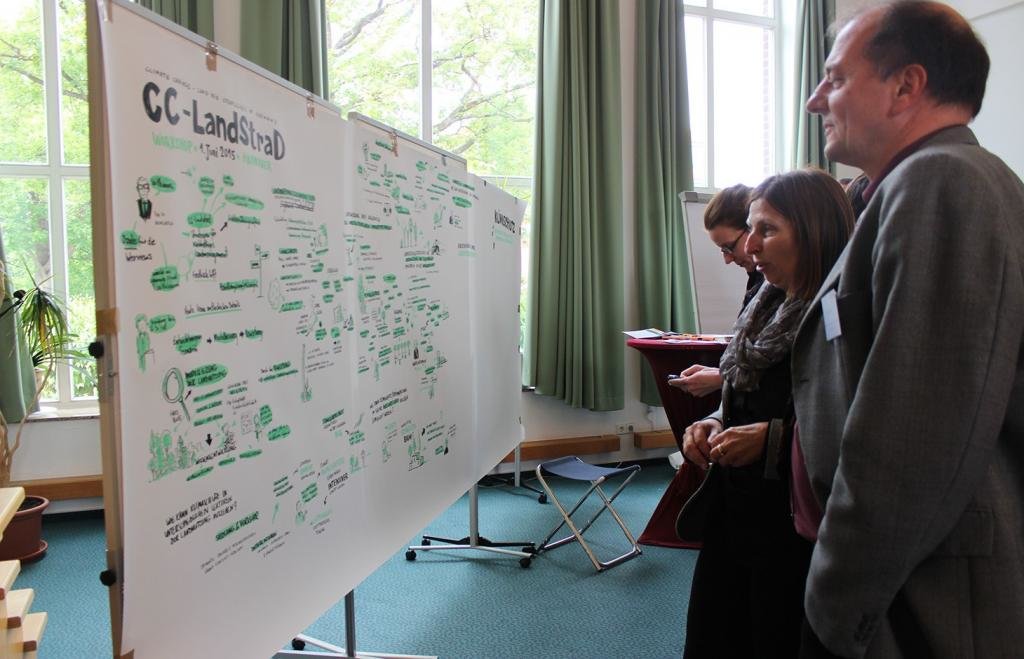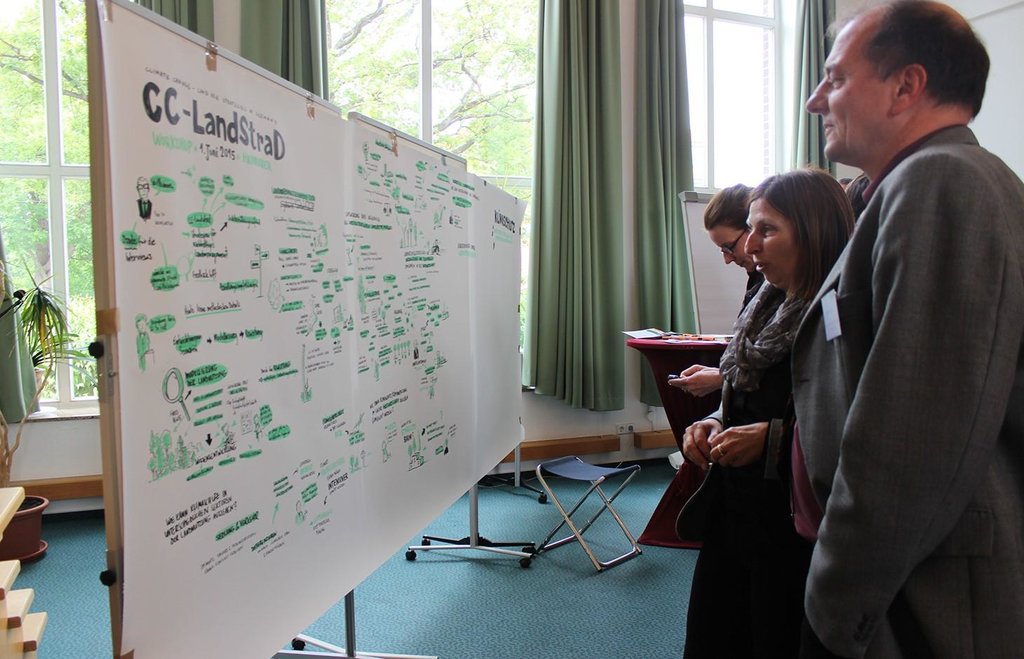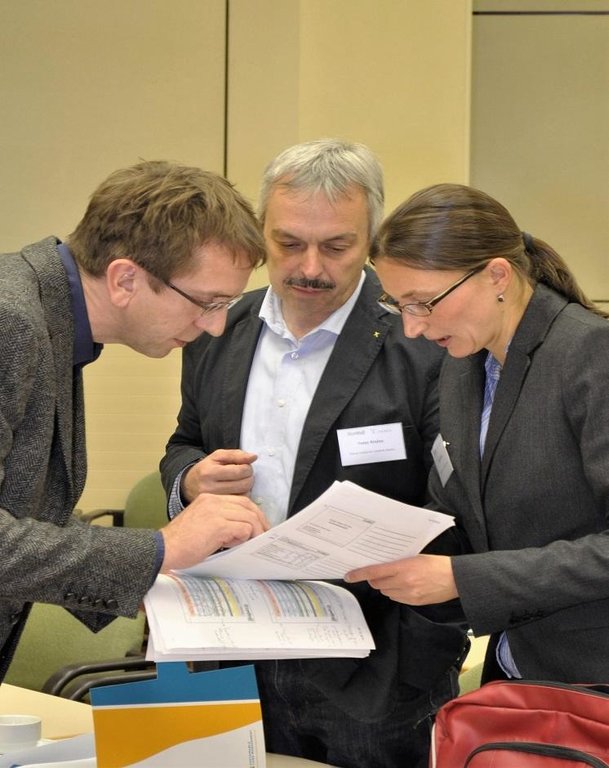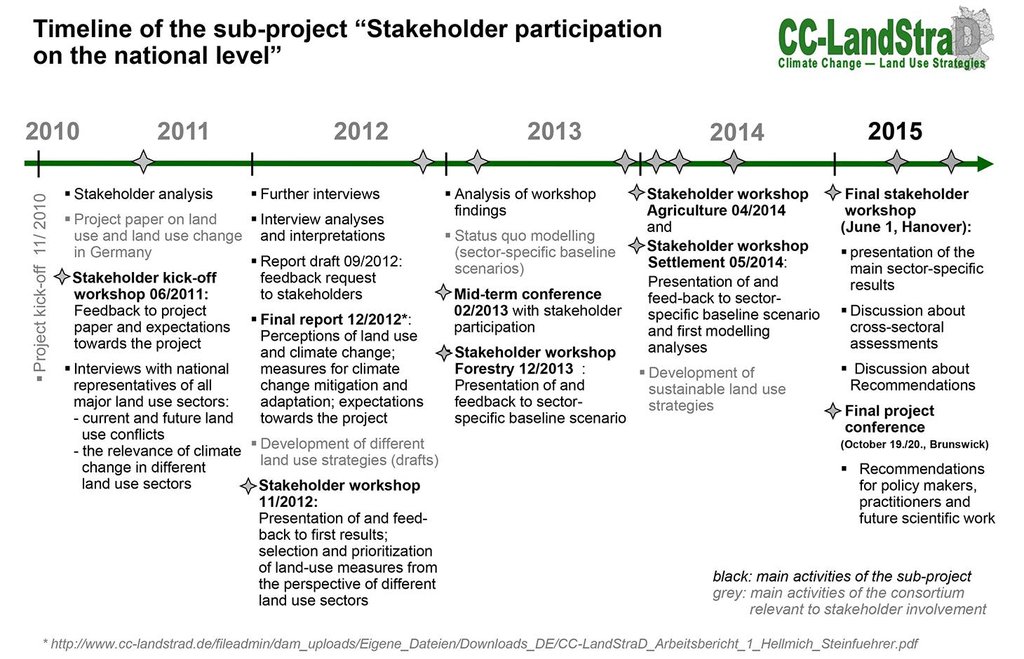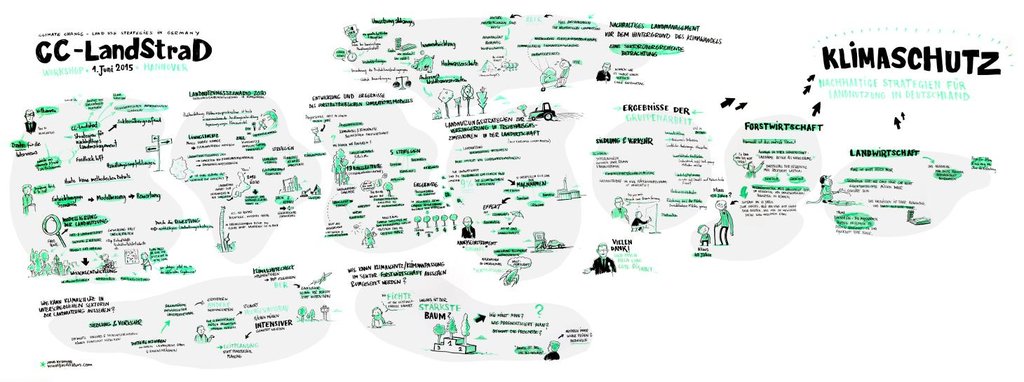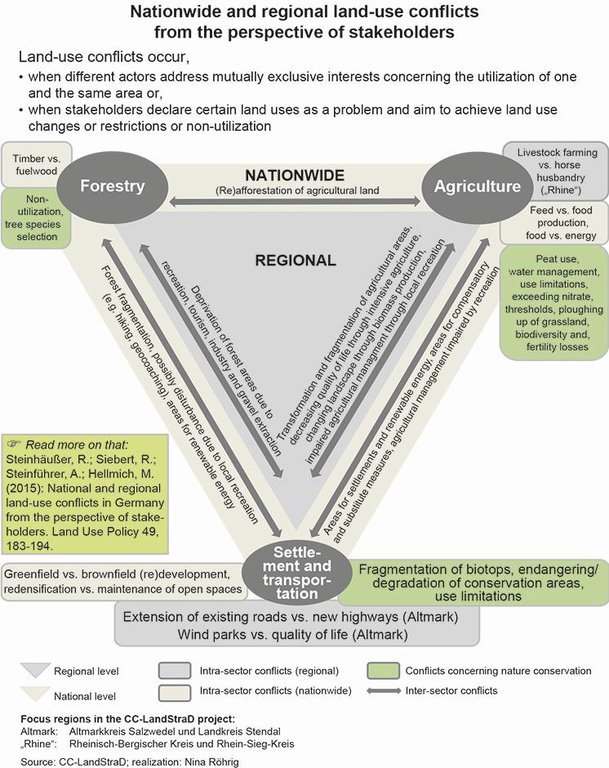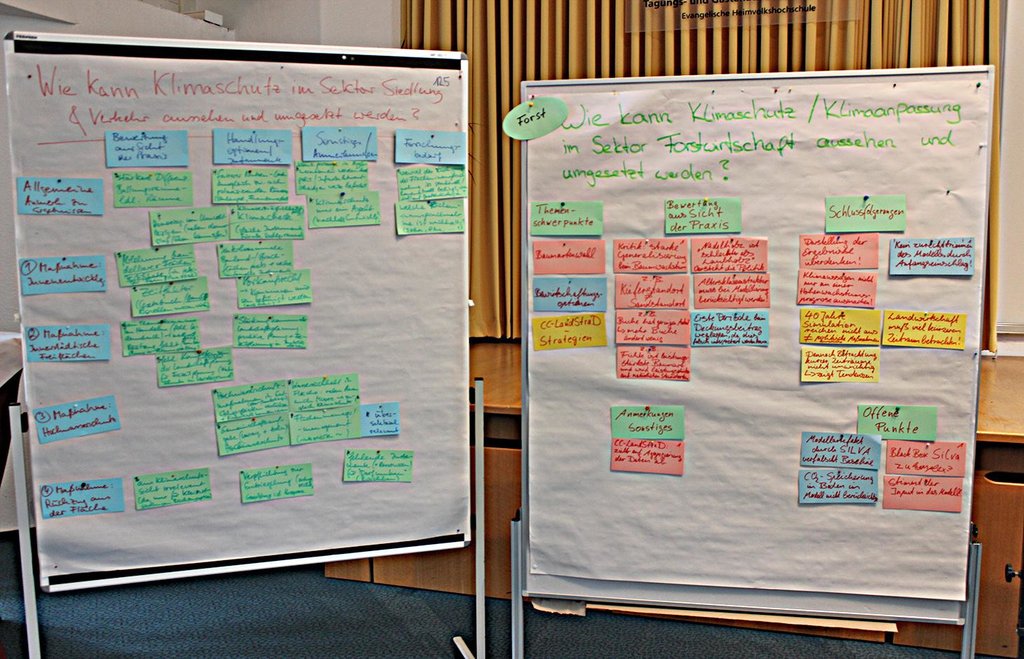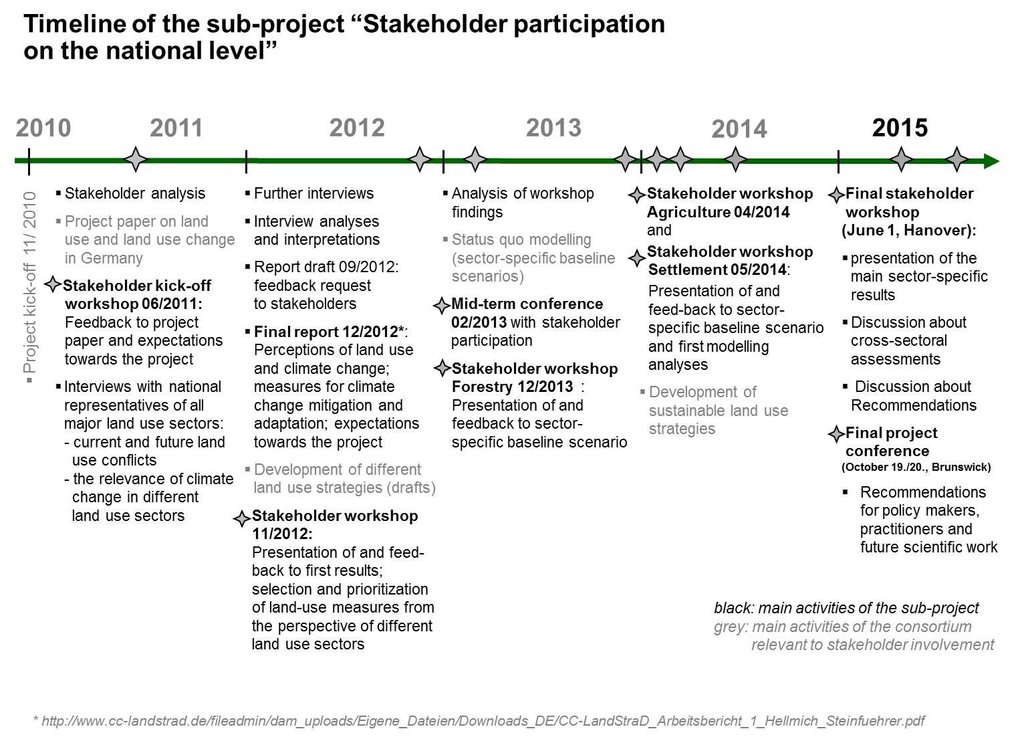Open dialogue platform on sustainable land management [Германия]
- Создание:
- Обновить:
- Составитель: Johanna Fick
- Редактор: –
- Рецензент: Fabian Ottiger
approaches_2605 - Германия
Просмотреть разделы
Развернуть все Свернуть все1. Общая информация
1.2 Контактные данные специалистов и организаций, участвующих в описании и оценке Подхода
Название организации (-ий), содействовавших документированию/оценке Подхода (если применимо)
CC-LandStraD - ГерманияНазвание организации (-ий), содействовавших документированию/оценке Подхода (если применимо)
Thünen Institute (Thünen Institute) - Германия1.3 Условия, регламентирующие использование собранных ВОКАТ данных
Когда были собраны данные (на местах)?
04/08/2015
Составитель и ответственный/-ые специалист(-ы) согласны с условиями, регламентирующими использование собранных ВОКАТ данных:
Да
1.4 Ссылка (-и) на Анкету (-ы) по Технологиям УЗП
2. Описание Подхода УЗП
2.1 Краткое описание Подхода
Establishing a dialogue platform on sustainable land management which is open to all stakeholders
2.2 Подробное описание Подхода
Подробное описание Подхода:
Aims / objectives: The cross-sectoral stakeholder discussion platform on SLM aims to involve all relevant stakeholders in a specific SLM topic, or within a particular region in a dialogue process leading to better understanding and to a sustainable solution where there are multifunctional claims on land. The platform operates in Germany.
Examples of possible topics are to work out, together, the main land use conflicts in a region (e.g. reduced land for agriculture because of increased settlement pressures) and then to jointly develop sustainable solutions for the land use conflicts addressed. The platform was established by a non-governmental group within a transdisciplinary research project (CC-LandStraD) financed by the Federal Ministry of Education and Research (BMBF) in Germany. The transdisciplinary research approach is carried out in cooperation with regional authorities.
The platform was established by a non-governmental group of researchers of a transdisciplinary research project financed by the Federal ministery of education and research in cooperation with regional authorities (transdisciplinary approach).
Methods: The platform provides a forum to discuss specific topics cross-sectorally (for example, agriculture, forestry, settlement and transportation, and nature conservation) and for multi-stakeholders (for example land users, advisors, specialists, planners, and decision makers). To establish this platform, a neutral setting and external moderation is helpful. Methods which can be used at the platform include separate sectoral and cross-sectoral workshops, excursions, information events and newsletters. Furthermore, there are simulations of different scenarios on current land use and on land use development and distribution, and at the same time there is cross-sectorial and transdisciplinary learning. This platform is not a single event, but an on-going process. Access barriers, for example an entrance fee, should not exist.
Stages of implementation: To initiate a platform, the most relevant aspects of a region/community and all related stakeholders have to be established through a stakeholder analysis. Interviews and surveys are employed to indicate who the relevant stakeholders are. During interviews the potential stakeholders are asked who they work with regarding land use. Further stages then focus on the most relevant aspects. These may be current land use conflicts like losses of agricultural land because of settlement and transportation infrastructure. Alternatively they can be conflicts regarding production of goods either for food, feed or energy purposes, or disputes concerning intensive or extensive agriculture, with the consequent implications on nature and environment conservation. Depending on which conflict is addressed, the relevant stakeholder and the process which is needed (e.g. sectoral talks, cross-sectoral talks, focus groups) can be identified. To identify the most relevant land use conflicts stakeholder are asked to rank the most relevant land use conflicts that affect them.
Role of stakeholders: Each stakeholder is welcomed and has the opportunity to state his/her opinion in an open-result discussion. The cross-sectoral learning process is an important aspect of this approach. In the case presented case there is interaction between stakeholders from agriculture, forestry and settlement/transport as well as nature conservation, regional and environmental planning and governmental institutions. The stakeholders were asked for the main land use conflicts in their work, relevant measures to resolve the situation, and their design, then discussed the scenario assumption, and selected results and possible implications.
2.3 Фотографии, иллюстрирующие Подход
2.5 Страна/ регион/ место, где применялся Подход
Страна:
Германия
Административная единица (Район/Область):
Germany, Saxony-Anhalt
Более точная привязка места:
Altmarkkreis Salzwedel and district Stendal (total area of region: 4744 km²)
2.6 Даты начала и окончания реализации Подхода
Год начала реализации:
2010
Год окончания (Если Подход больше не применяется):
2015
2.7 Тип Подхода
- в рамках проекта/ программы
2.8 Каковы цели/ задачи Подхода
The Approach focused mainly on SLM with other activities (different interests on SLM in dialogue, cross-sectoral and with all related interest groups)
A cross-sectoral stakeholder discussion platform on SLM aims at involving all relevant stakeholders around a specific SLM topic, or within a particular region in a dialogue process leading to better understanding and improved, sustainable, solutions. In a “business as usual” situation, generally no cross sectoral talks or interaction take place. With such a platform however, more knowledge and direct talks between stakeholders from different sectors provide the opportunity for solutions.
The SLM Approach addressed the following problems: There are different and competing demands on land which can conflict with the conventional uses for agriculture and forestry. These include biomass for energy, new settlements and transportation infrastructure. Space is also needed for tourism and leisure facilities; and also for measures of environmental protection. All of these can have an impact on the area available for, and the management of, farmland and forests. And there are competing economic interests in land management. As land is a limited resource, problems between different stakeholders are inevitable and becoming more frequent.
2.9 Условия содействующие применению Технологии/ Технологий в рамках Подхода или затрудняющие его
Социальные/ культурные/ религиозные нормы и ценности
- затрудняют
All stakeholder have different backgrounds and different levels of knowledge and interests. Sometimes the relevant stakeholders don't know each other.
Treatment through the SLM Approach: A neutral setting, so that no stakeholder has a(n) (dis)advantage and an external
moderation which is accepted by all involved stakeholders, and professional input by experts (e.g. from research institutions) so that a joint learning process starts. Here it is essential to provide a good atmosphere and a common understanding of the key questions.
Наличие/ доступность финансовых ресурсов и услуг
- затрудняют
Different stakeholders have different resources to contribute to this platform (e.g., time, finance, knowledge, equipment like beamer, microfons etc.).
Treatment through the SLM Approach: Trying to keep the barriers as low as possible and equal for each and every stakeholder (e.g. no entrance fee, public invitations in advance, central meeting location, meeting at a suitable time for the stakeholders).
Нормативно-правовая база (землевладение, права на земле- и водопользование)
- содействуют
The existing land ownership, land use rights / water rights moderately helped the approach implementation: . The land ownership, land use rights/water rights are quite clear in Germany. So it is easy to identify the relevant stakeholders on SLM. But these are only a few target groups. There are much more which are relevant to get a good platform on SLM e.g. nature conservation groups, tourism associations.
Объем работ, доступность рабочей силы
- затрудняют
To implement and run a dialogue platform it takes time and professional skills and resources (e.g. high motivation and high frustration tolerance, moderation and motivation methods, knowledge about group dynamics).
Treatment through the SLM Approach: Be aware of this before the dialogue platform is set-up (such a process is not a one-off short-term, activity: it’s better thought of as medium-long term process).
другие
- затрудняют
1. Stakeholders have different levels of knowledge and professionality
2. Previous conflicts (some known; some hidden) and other areas of controversy sometimes come to light during discussions.
Treatment through the SLM Approach: 1. It is necessary to make information accessible by moderation and to create common understanding (e.g. sometimes the same term exists in agriculture and forestry but has a different meaning).
2. Be sensitive to nonverbal communication or conflict topics and be prepared to deal with such issues even if not communicated verbally.
3. Участие и распределение ролей заинтересованных сторон
3.1 Заинтересованные стороны, участвующие в реализации Подхода и их роли
- местные землепользователи/ местные сообщества
Farmers, forest owners, counties, municipalities, associations on agriculture, forestry or nature conservation
Participating groups with less financial resources received travel grants
- эксперты по УЗП/ сельскому хозяйству
- государственные власти (отвечающие за планирование или принятие решений)
Regional planners, planners on settlement and transport
On federal and county level
Remark: should include: agricultural, forestal, settlement and transport sector as well nature conservation. It is essentiell to deal with all of these people, that is the important part of this approach
Если участвовало несколько заинтересованных сторон, назовите ведущую организацию:
We initiated this approach by a non-govenmental group of reseachers in cooperation with regional authorities. But this approach is not related to one body. Either national non-government or government or private sector or local government or local community/a group of land user can start the approach.
3.2 Участие местных землепользователей/ местных сообществ на разных стадиях реализации Подхода
| Участие местных землепользователей/ местных сообществ | Перечислите участников и опишите их вовлеченность | |
|---|---|---|
| инициирование/ мотивация | интерактивное | scientists working with transdisciplinary processes |
| планирование | интерактивное | scientists on transdisciplinary processes and disciplinary scientists on SLM |
| выполнение | пассивное | all involved stakeholders mentioned above = passive; scientists = interactive |
| мониторинг/ оценка | пассивное | all involved stakeholders mentioned above, scientists |
| Research | интерактивное | all involved stakeholders mentioned above and all scientists |
3.3 Схема реализации (если имеется)
Описание:
Time sheet stakeholder participation on national level.
The ‘sub-project' started in the first year with an overview workshop on current and future land use and climate change, followed by face-to-face interviews. The second year focused on the process to identify the most relevant measures for climate mitigation of each sector (agriculture, forestry, settlement and transportation, and nature conservation). The last three years were used to discuss preliminary results and to evaluate the results from the stakeholder perspectives.
Автор:
Meike Hellmich, Annett Steinführer (Thünen-Institut Braunschweig)
3.4 Принятие решений по выбору Технологии/ Технологий УЗП
Было решение по выбору Технологии (-ий) принято:
- multi-stakeholder dialogue process
Поясните:
Land users supported by SLM specialists e.g. an extensive management of grassland
SLM specialists with consultation of land users: practical test phase of new technology or innovative practise
by politicians / leaders (e.g. decisions regarding societal aims like environment protection)
Decisions on the method of implementing the SLM Technology were made by no decisions. No decisions have been made yet.
4. Техническая поддержка, повышение компетенций и управление знаниями
4.1 Повышение компетенций/ обучение
Проводилось ли обучение землепользователей/ других заинтересованных лиц?
Да
Укажите, кто проходил обучение:
- землепользователи
- местный персонал/консультанты
- involved people
Рассматриваемые темы:
The activities focused on each level/stage (measures, scenarios, results and implication) to provide knowledge to and with all participants in order to focus on the meeting's objectives and to raise awareness (why are we doing this? why is it important to be here? why should we talk about this topic?).
4.2 Консультационные услуги
Есть ли у землепользователей возможность получать консультации?
Да
Описание/ комментарий:
Advisory service is quite adequate to ensure the continuation of land conservation activities; The approach raised awareness and brought people together who normally don’t discuss topics with each other.
4.3 Институциональная (организационная) поддержка
В ходе реализации Подхода были ли организованы новые институциональные структуры или поддержаны уже существующие?
- да, немного
Укажите уровень, на котором структуры были укреплены или вновь созданы:
- местные
Опишите организацию, функции и ответственность, членство и т.д.
This method can support local institutions via the input and mutual discussions of regional associations and groups. However, certain groups may mutually exclude each other.
4.4 Мониторинг и оценка
Являются ли мониторинг и оценка частью Подхода?
Да
Комментарии:
socio-cultural aspects were monitored by project staff through observations; indicators: Interviews by scientists at the project end regarding cross-sectoral and transdisciplinary approach
There were no changes in the Approach as a result of monitoring and evaluation
There were no changes in the Technology as a result of monitoring and evaluation
4.5 Научные исследования
Были ли научные исследования частью Подхода?
Да
Укажите темы исследований:
- социология
- экономика / маркетинг
- экология
Напишите подробнее и назовите тех, кто выполнял исследования:
Simulation of land use development in Germany was undertaken, including simulation of agricultural economics, forest economics and simulation of settlement and transport areas development, of GHG emissions of land use, and a population survey on perceptions of landscapes
Research was carried out on station
5. Финансирование и внешняя материальная поддержка
5.1 Годовой бюджет мероприятий по УЗП в рамках Подхода
Если точный годовой бюжет неизвестен, укажите примерный диапазон затрат:
- < 2000
Комментарий (например, основные источники финансирования/ ключевые доноры):
Approach costs were met by the following donors: government: 95.0%; local government (district, county, municipality, village etc): 5.0%
5.2 Финансирование и внешняя материальная поддержка, предоставляемая землепользователям
Предоставлялась ли землепользователям финансовая/ материальная поддержка для применения Технологии /Технологий?
Нет
5.3 Субсидии на отдельные затраты (включая оплату труда)
- нет
Комментарии:
Time which was needed to take part in the dialogue platform other inputs not relevant
5.4 Кредитование
Предоставлялись ли в рамках Подхода кредиты на мероприятия УЗП?
Нет
6. Анализ влияния и заключительные положения
6.1 Влияние Подхода
Сумел ли Подход помочь землепользователям внедрить и поддерживать технологии УЗП?
- Нет
- Да, немного
- Да, умеренно
- Да, существенно
The complex topic land use and climate change (with focus on climate change mitigation) was analysed and presented to the involved stakeholders. The interaction during cross-sectoral workshops gave a more detailed picture on SLM compared with workshops with a sectoral focus. The better knowledge base helps to improve SLM.
Сумел ли Подход расширить возможности социально и экономически уязвимых групп?
- Нет
- Да, немного
- Да, умеренно
- Да, существенно
Not in the focus
Did other land users / projects adopt the Approach?
- Нет
- Да, немного
- Да, умеренно
- Да, существенно
The approach is also used in regional development processes sometimes.
Did the Approach lead to improved livelihoods / human well-being?
- Нет
- Да, немного
- Да, умеренно
- Да, существенно
; the awareness of intensive land use in Germany and in our focus regions was raised, especially regarding the interaction between agricultural land use and (for example) water quality because of intensive agriculture including the application of fertilizers, pesticides or herbicides. Often these chemical inputs cannot absorbed by plants or soil so the unused resources concentrate in groundwater and thus needs to purified before drinking. Land use improvements can be achieved by agreeing the division between settlement, transport and land for agricultural production - and also for sustainable land use to reduce GHG emissions in agriculture and forestry.
Did the Approach help to alleviate poverty?
- Нет
- Да, немного
- Да, умеренно
- Да, существенно
6.2 Основные причины, побуждающие землепользователей внедрять УЗП
- причастность к движению/ проекту/ группе/ сети
in this approach all land using sectors were involved for the first time
6.3 Долгосрочная устойчивость мероприятий в рамках Подхода
Могут ли землепользователи самостоятельно (без внешней поддержки) продолжать применение того, что было реализовано в рамках Подхода?
- да
Если да, опишите как:
This approach is suitable for different levels, for different topics or different stakeholders involved.
6.4 Сильные стороны/ преимущества Подхода
| Сильные стороны/ преимущества/ возможности по мнению землепользователей |
|---|
| New information, innovative methods and results, current political trends (How to sustain/ enhance this strength: Presentation of new information has to be in a language adequate for the target groups.) |
| Сильные стороны/ преимущества/ возможности по мнению составителя или других ключевых специалистов |
|---|
| Added value e.g. research can be needed to get new input (How to sustain/ enhance this strength: Clear announcement of added value for different target groups) |
| All relevant stakeholders are involved (How to sustain/ enhance this strength: make sure that all relevant stakeholders are identified during the initial stakeholder analysis.) |
| Cross-sectoral and sectoral meetings by turns, depending on specific aspects of the meeting (How to sustain/ enhance this strength: Problem and solution oriented talks and meetings) |
| Neutral setting and external moderation |
| New information and knowledge by researcher is shared (How to sustain/ enhance this strength: Cooperation with research institution) |
6.5 Слабые стороны/ недостатки Подхода и пути их преодоления
| Слабые стороны/ недостатки/ риски по мнению землепользователей | Возможные пути их преодоления/снижения? |
|---|---|
| There should be an added value for land user and the added value should be addressed clearly. | e.g. new information provided by researcher must be tailored to the different stakeholders. |
| Слабые стороны/ недостатки/ риски по мнению составителя или ответственных специалистов | Возможные пути их преодоления/снижения? |
|---|---|
| It takes time to produce the right working atmosphere and to reach a common language. | Avoid short-term initiatives. |
|
The moderation has to be accepted by all stakeholders. |
7. Справочные материалы и ссылки
7.1 Методы сбора/источники информации
- выезды на места, полевые обследования
- опросы землепользователей
7.2 Ссылки на опубликованные материалы
Название, автор, год публикации, ISBN:
Steinhäußer, R. et al. (2015) National and regional land-use conflicts in Germany from the perspective of stakeholders
Где опубликовано? Стоимость?
Land UsePolicy 49, 183-194
Название, автор, год публикации, ISBN:
• Lange, A.; Siebert, R.; Barkmann, T. (2016) Incrementality and Regional Bridging: Instruments for Promoting Stakeholder Participation in Land Use Management in Northern Germany.
Где опубликовано? Стоимость?
Society & Natural Resources , Jul2016, Vol. 29 Issue 7, p868-879, 12p.
Ссылки и модули
Развернуть все Свернуть всеСсылки
Нет ссылок
Модули
Нет модулей



